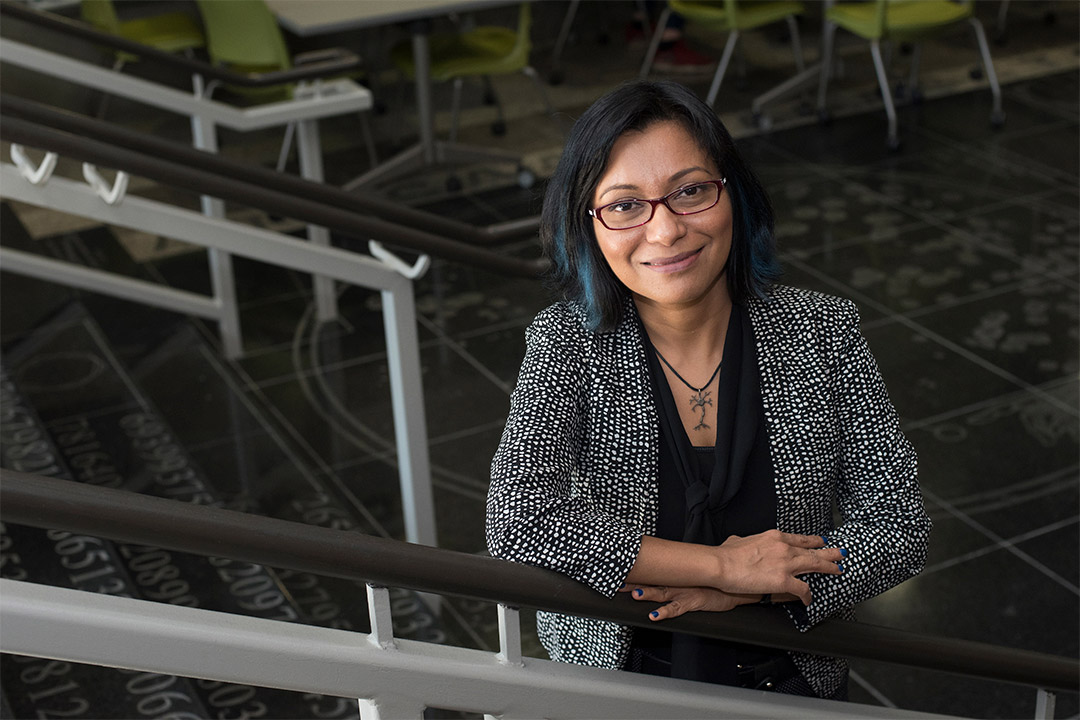RIT part of collaborative NSF project to program biological cells to design futuristic materials
RIT Associate Professor Moumita Das heads modeling and theory contributions to the project
A. Sue Weisler
Associate Professor Moumita Das is part of a team of researchers who were recently awarded a $1.8 million grant from the National Science Foundation to design and create next-generation materials inspired and empowered by biological cells.
Rochester Institute of Technology Associate Professor Moumita Das is part of a team of researchers that was recently awarded a $1.8 million grant from the National Science Foundation to design and create next-generation materials inspired and empowered by biological cells.
The team’s goal is to create self-directed, programmable, and reconfigurable materials—using biological building blocks including proteins and cells—that are capable of producing force and motion. This research could pave the way for future materials applications ranging from self-healing bridges and self-propulsive materials to programmable micro-robotics, wound healing and dynamic prosthetics.
Das will be working alongside a team of physicists, biologists, and engineers, including principal investigator Professor Rae Robertson-Anderson at the University of San Diego, Professor Megan Valentine at the University of California Santa Barbara, Professor Jennifer Ross at Syracuse University, and Professor Michael Rust at the University of Chicago.
Das is a theorist and mathematical modeler who will develop predictive and quantitative mathematical models for this project, informed by experiments performed by the other collaborators on the project.
“This particular grant has a very tight feedback between theory and experiments,” said Das, faculty in RIT’s School of Physics and Astronomy. “I want to make models that can quantitatively help us predict the properties of materials and provide us with principles for rational design so we can actually construct them.”
The four-year grant will also allow for undergraduates at each university to gain hands-on collaborative research experiences, mentoring, and professional development opportunities. At the end of the project, the team will have built the framework for their materials design concept, including a small prototype, that can help others to advance futuristic materials to accomplish the many processes that living systems already perform seamlessly, such as healing and regulating themselves.
“We have assembled a top-notch interdisciplinary team of researchers from across the country that bring unique perspectives and expertise to make these research ideas become a reality,” said Robertson-Anderson. “This project is a key example of the power of a collaborative team approach to research that is driving scientific discovery and is required to solve the many current pressing problems facing society — including those that demand new materials.”
Funding for the project begins on Oct. 1. For more information about the project, go to the NSF website.
